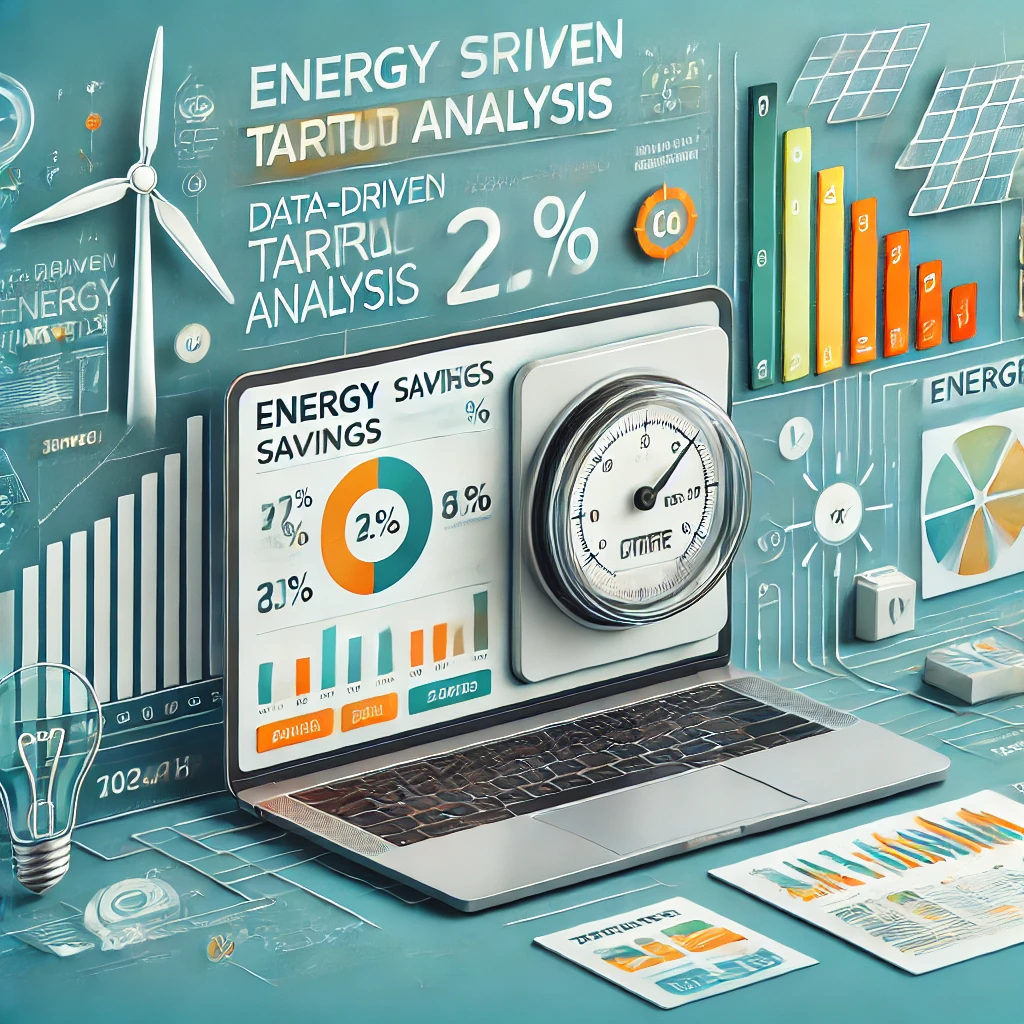Let’s face it—energy bills can be a headache. Whether you’re a homeowner, renter, or running a business, the rising cost of energy is something we all feel. But what if there was a smarter way to manage your energy costs? Enter energy tariffs and data-driven tariff analysis. These might sound like buzzwords, but they’re powerful tools that can help you save money without sacrificing comfort or convenience.
In this guide, we’ll break down everything you need to know about energy tariffs, how to analyze them effectively, and how to make data-driven decisions that put money back in your pocket. By the end, you’ll have actionable steps to take control of your energy bills.
What Are Energy Tariffs?
Energy tariffs are pricing plans offered by energy suppliers. Think of them as a menu of options to power your home or business. Tariffs can vary widely in:
- Unit rates: The cost per kilowatt-hour (kWh) of energy used.
- Standing charges: A daily fee for maintaining your connection to the energy grid.
- Green energy options: Plans that focus on renewable energy sources.
Some tariffs are fixed, meaning prices remain constant for a set period, while others are variable, fluctuating with market conditions.
But here’s the catch: not all tariffs are created equal. What works for your neighbor may not work for you. That’s where data-driven tariff analysis comes in—analyzing your energy usage patterns to find a tariff that aligns perfectly with your needs.
Why Is Data-Driven Tariff Analysis Important?
You might wonder, “Why can’t I just pick the cheapest tariff and call it a day?” It’s not that simple. The cheapest tariff on paper might cost you more if it doesn’t match your energy consumption habits. For example:
- A plan with a low unit rate but high standing charge might not be cost-effective for low-energy users.
- Variable tariffs might seem risky but could save money if your usage is concentrated during off-peak times.
Data-driven tariff analysis eliminates the guesswork. By examining your historical energy data, you can identify trends—like peak usage times or seasonal spikes—and choose a tariff optimized for your unique needs.
How to Use Data-Driven Tariff Analysis to Save Money
Here’s a step-by-step guide to making smarter, data-driven energy decisions:
- Gather Your Energy Usage Data
- Collect at least 12 months of energy bills or access usage data from your smart meter.
- Tools like [Energy Monitor Apps] or [Your Energy Provider’s Dashboard] can simplify data collection.
- Identify Your Usage Trends
- Look for seasonal patterns, such as higher usage in winter for heating.
- Analyze peak usage hours. For example, households might consume more energy during evenings.
- Compare Tariffs Using Online Tools
- Use comparison sites like [EnergyCompare] or consult with an energy expert.
- Evaluate unit rates, standing charges, and discounts for direct debit or paperless billing.
- Consider Time-of-Use Tariffs
- If you use most energy during off-peak hours, a time-of-use tariff could reduce costs.
- Example: Charging appliances like EVs at night can save up to 30% on energy costs.
- Switch and Save
- Once you’ve identified the best tariff, initiate the switch. Most providers now handle the process seamlessly, ensuring uninterrupted service.
Case Study: Small Business Energy Savings
John, a café owner, noticed that his energy bills were higher during the summer due to air conditioning use. Using data-driven analysis, he switched to a time-of-use tariff. By running appliances like dishwashers and fridges during off-peak hours, he reduced his bills by 20%—saving over $1,200 annually.
Common Challenges and Misconceptions
While data-driven tariff analysis is a powerful tool, a few common hurdles might arise:
- Myth: Switching Tariffs Is Complicated
Reality: Energy providers now offer streamlined switching processes that can be completed in as little as 15 minutes. - Challenge: Lack of Data
Solution: Invest in a smart meter to get real-time insights into your energy usage. These devices also help you identify wasteful consumption patterns. - Myth: Green Tariffs Are Expensive
Reality: Many green tariffs are competitively priced. For example, some renewable energy providers offer incentives for off-peak usage.
Benefits of Using Data-Driven Tariffs
- Cost Savings: Tailored tariffs can save households up to 30% annually on energy bills.
- Environmental Impact: Switching to green tariffs helps reduce your carbon footprint.
- Control Over Spending: Monitoring energy usage helps eliminate wasteful practices, like leaving appliances on standby.
Conclusion
Saving money on energy doesn’t have to be daunting. By understanding energy tariffs and leveraging data-driven analysis, you can make informed decisions that reduce costs and align with your lifestyle. Start small: gather your energy data, identify trends, and use tools or expert advice to find the perfect plan for you.
Ready to take control of your energy bills? Start by tracking your energy usage today. Already switched tariffs? Share your story in the comments—we’d love to hear how data-driven analysis worked for you!

